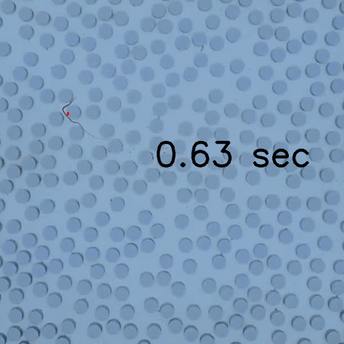In the large family of active matter, active polymers are of considerable interest due to their prevalence in biological systems on multiple length scales. On the nano and microscale, biology provides many examples of active flexible structures ranging from actin filaments and microtubules (the main constituents of the cytoskeleton in living cells) to flagella in sperm, algae, bacteria, and a diversity of other planktonic microorganisms. Understanding the non-equilibrium statistical mechanics of such active systems is a major challenge, both experimentally and theoretically. We use living polymer-like worms (Tubifex tubifex) and active chains made of self-propelled bots as an experimental platform to investigate the fundamental mechanisms that govern the Physics of this rich subclass of active matter.
Transport of active polymer in porous media
Active polymerlike systems are found everywhere in nature: From the cytoskeleton in cells to a snake moving in the desert, understanding how these active filaments move through crowded and porous environments is key for our understanding of many biological systems. Because these systems are active, they are out of equilibrium and therefore break with much of our understanding of regular polymer physics. In a model experiment, we let sludge worms (T. Tubifex) explore a quasi 2D array of pillars. By varying parameters like the density and the structure of the pillars, we try to find general mechanisms that govern the transport of active polymers through porous environments.

-Rheology of Entangled Active Polymer-Like T. Tubifex Worms
Antoine Deblais, Sander Woutersen, and Daniel Bonn.
Physical Review Letters 124, 188002, 2020 | [ArXiv] | [PDF]
-Phase Separation by Entanglement of Active Polymerlike Worms
Antoine Deblais, Daniel Bonn, and Sander Woutersen.
